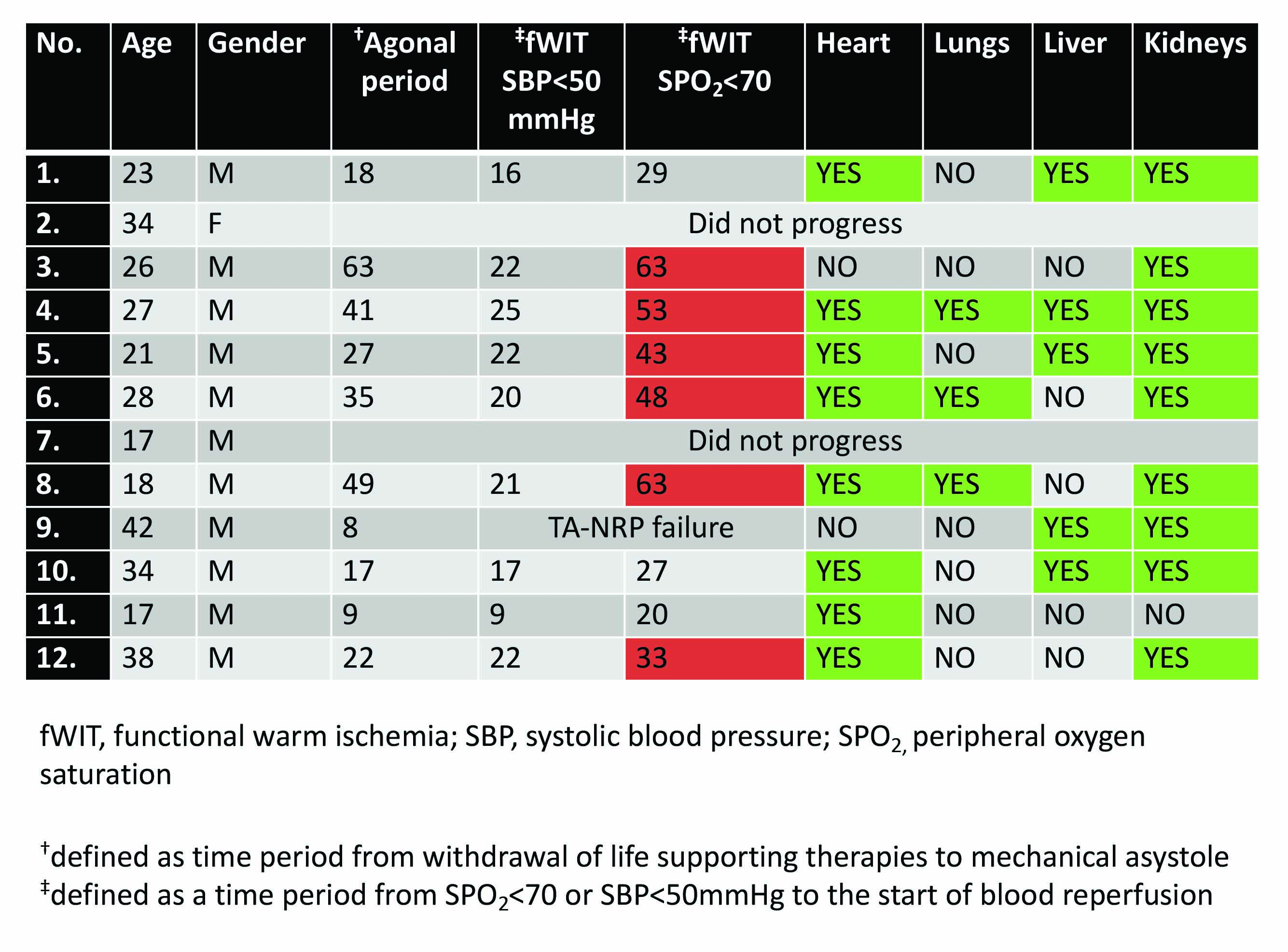Donor Organ Utilization And Transplantation Outcomes In Donation After Circulatory Death Using Thoracoabdominal Normothermic Regional Perfusion
M. Urban, S. Merani, N. W. Markin, A. Castleberry, J. Um
University of Nebraska Medical Center, Omaha, NE
Meeting: 2022 American Transplant Congress
Abstract number: 9016
Keywords: Donors, non-heart-beating, Graft function, Graft survival, Ischemia
Topic: Clinical Science » Liver » 59 - Liver: Expanding the Donor Pool* (Liver: MELD Allocation / Donor Issues)
Session Information
Session Name: Late Breaking: Clinical
Session Type: Rapid Fire Oral Abstract
Date: Sunday, June 5, 2022
Session Time: 3:30pm-5:00pm
 Presentation Time: 4:00pm-4:10pm
Presentation Time: 4:00pm-4:10pm
Location: Hynes Room 313
*Purpose: Evidence suggests that in-situ reperfusion of abdominal organs with normothermic oxygenated blood in donation after circulatory death (DCD) provides superior post-transplantation outcomes in comparison to ultra-rapid recovery. Recently, extension of this technique to thoracic organs, referred to as thoracoabdominal normothermic regional perfusion (TA-NRP), is being adopted by cardiac recovery teams to procure DCD cardiac allografts. The implication of TA-NRP on the utilization of non-cardiac organs and post-transplantation outcome of recipients of these organs has not been well established.
*Methods: All TA-NRP procedures were performed by thoracic recovery team in accordance with an approved institutional protocol with the intention to procure cardiac allografts for recipients enrolled in a DCD TA-NRP clinical trial (NCT04626284). The enrollment began in January 2021. We expect to conclude the study by the end of March 2022 after 10 DCD hearts are successfully transplanted.Preliminary data:Up to this date our team attended 12 DCD recoveries and recovered 8 cardiac allografts. Apart from the hearts, 3 lungs, 5 livers, and 18 kidneys were recovered and transplanted. Organ acceptance for transplantation was based on each team’s institutional criteria for maximal tolerable warm ischemia and visual inspection after in-situ organ reperfusion. Important time intervals pertinent to withdrawal and recovery process are summarized in Table 1.
*Results: Outcomes of Interest:Primary outcome is observed to expected (O/E) organ-specific utilization rate (% of organs transplanted out of organs accepted ). Secondary outcomes are survival with functioning graft at one month/one year, and graft failure/dysfunction during the first month/year. Recipient outcome data will be obtained from SRTR matched with UNOS database.
*Conclusions: Expected Impact:This study will offer a unique opportunity to assess the role of TA-NRP in DCD transplantation from the perspective of different organ-specific surgical specialties. Evaluation of post-transplantation results will provide an objective metric for comparison with other DCD organ recovery techniques and also provide valuable insight into the impact of warm ischemia on outcomes in the setting of TA-NRP.
To cite this abstract in AMA style:
Urban M, Merani S, Markin NW, Castleberry A, Um J. Donor Organ Utilization And Transplantation Outcomes In Donation After Circulatory Death Using Thoracoabdominal Normothermic Regional Perfusion [abstract]. Am J Transplant. 2022; 22 (suppl 3). https://atcmeetingabstracts.com/abstract/donor-organ-utilization-and-transplantation-outcomes-in-donation-after-circulatory-death-using-thoracoabdominal-normothermic-regional-perfusion/. Accessed December 30, 2025.« Back to 2022 American Transplant Congress

